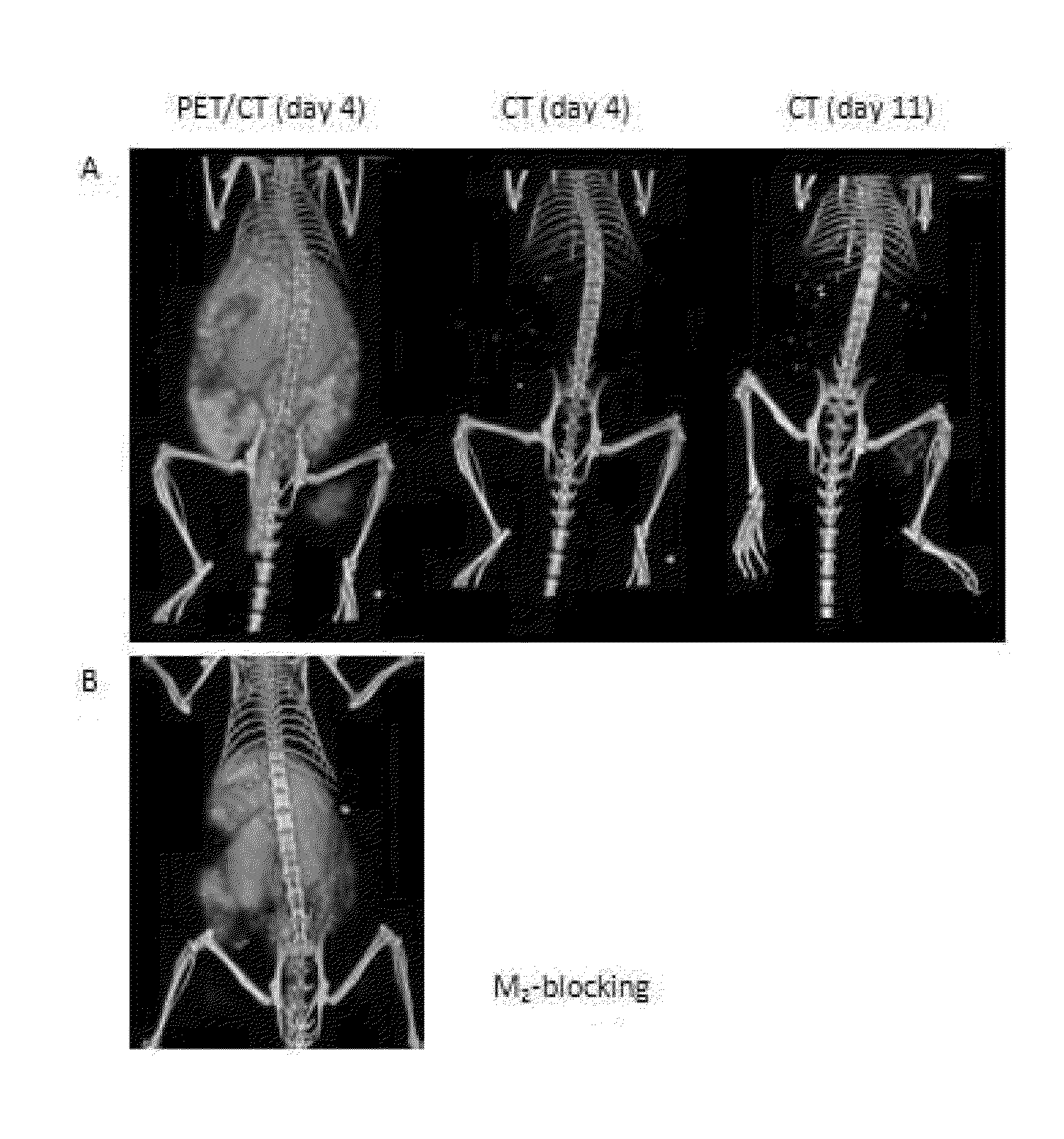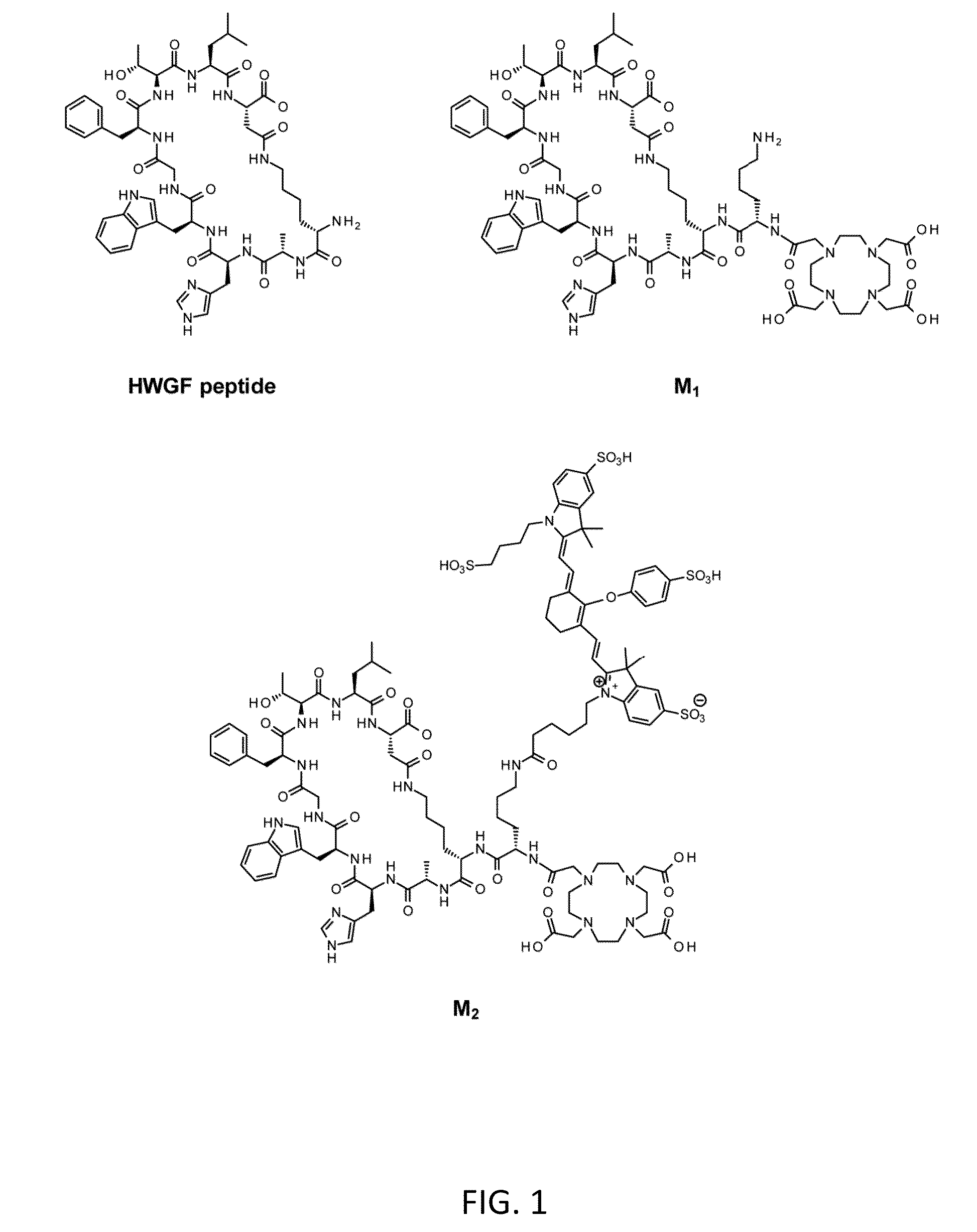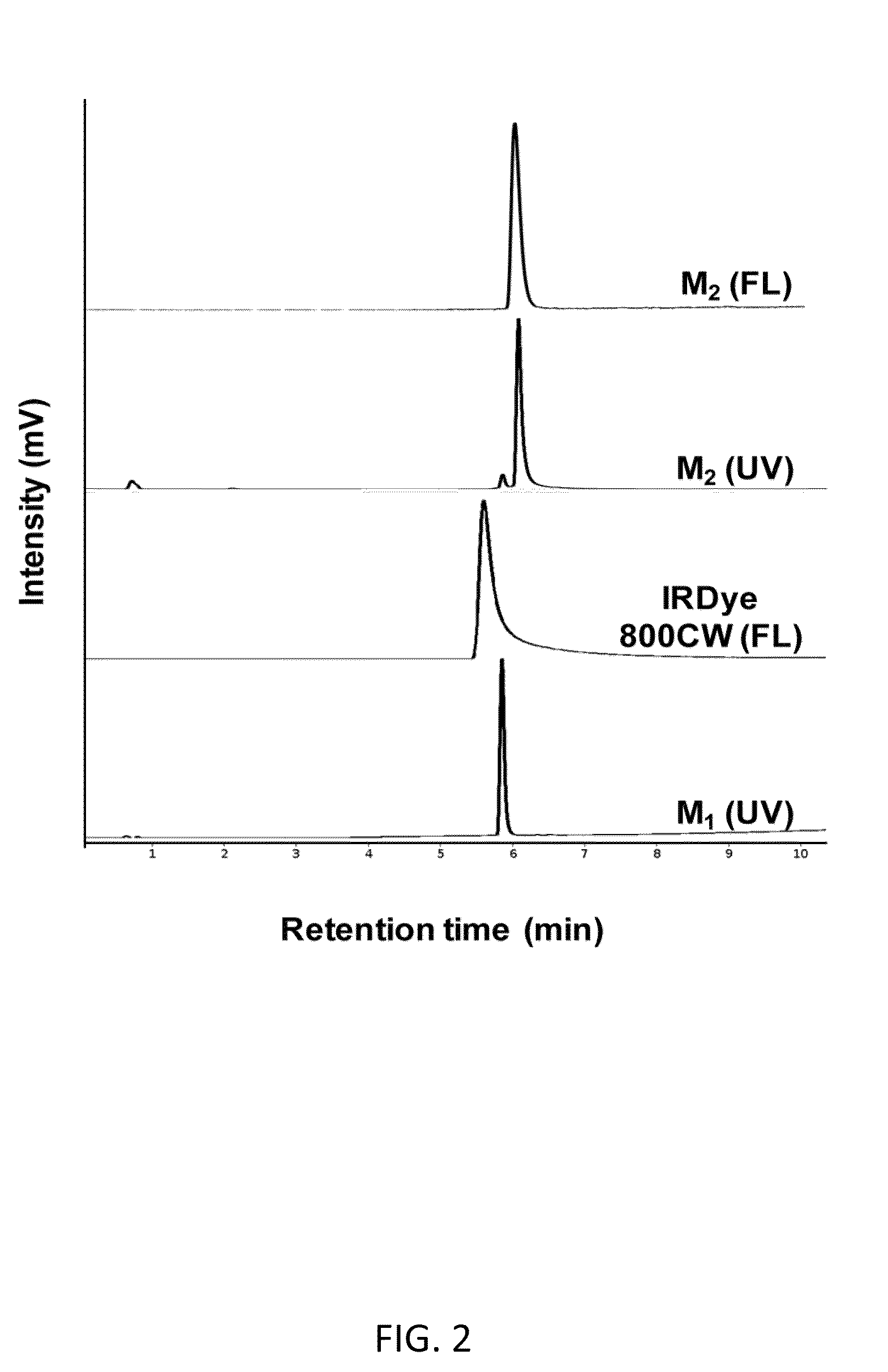Methods for imaging bone precursor cells using dual-labeled imaging agents to detect mmp-9 positive cells
a bone precursor cell and imaging agent technology, applied in the field of cell biology, molecular biology, imaging, diagnostics, etc., can solve the problem of a single agent capable of carrying dual-contrast for both nuclear and ct or mri imaging modalities, and achieve the effect of reducing the difficulty of developmen
- Summary
- Abstract
- Description
- Claims
- Application Information
AI Technical Summary
Benefits of technology
Problems solved by technology
Method used
Image
Examples
example 1
Exemplary Experimental Procedures
[0112]Reagents
[0113]All reagents were purchased from commercial sources and used without further purification. Chelex-100 resin was purchased from Bio-Rad Laboratories (Richmond, Calif.) and used with all aqueous buffers to ensure metal-free conditions. The DOTA (1,4,7,10-tetraazacyclotetradecane-N′,N″,N″′,N″″-tetraacetic acid)-modified cyclic MMP-targeting peptide (lactam 2,10) DOTA-KKAHWGFTLD (M1) (SEQ ID NO:1) was synthesized by New England Peptide (Gardner, Mass.) according to standard Fmoc-protocols. A commercially-available 68Ge / 68Ga generator was purchased from Eckert & Ziegler (Berlin, Germany). Analytical high-performance liquid chromatography (HPLC) was performed on a Hitachi LaChrom system equipped with a 2.6 μm Kinetex C-18 column (Phenomenex, Torrance, Calif.) with a mobile phase of A=0.1% TFA in H2O, B=0.1% TFA in CH3CN; gradient, 0 min=10% B, 10 min=90% B; flow rate, 1 mL / min. Radio-thin-layer chromatography (radio-TLC) was carried out...
example 2
Conjugation of IRDye 800CW
[0132]The dual-conjugate M2 was formed through attachment of IRDye 800CW to M1. Analysis of the spin column-purified sample by HPLC showed >90% purity with a small amount of unreacted M1 present in the final product and was used for all subsequent studies. FIG. 2 shows HPLC chromatograms with UV detection at 280 nm and fluorescence detection. Retention times of 5.9 min and 6.1 min were observed for M1 and M2 (at 280 nm), respectively, while fluorescence detection of IRDye 800CW had a retention time of 5.6 min. The HPLC data shows a single fluorescent peak for M2, confirming formation and purity of the dual-conjugate. Analysis by ESI-MS showed that the observed molecular weight (2555.9) was in excellent agreement with the calculated value (2555.92).
example 3
[0133]M2 was radiolabeled with 68Ga using the fractionation method and radiochemical purity (RCP) of >95% were achieved within 10 min, with 13 min selected as the optimal heating time. FIG. 3 shows that 68Ga-M2 is formed with high labeling efficiency over the range of peptide amounts investigated. Similar RCP were observed between the peptide amounts tested, therefore, 6 nmol (15 μg) was selected for radiolabeling experiments to achieve the highest specific activity and reaction conditions were optimized using 0.1 N NaOAc buffer. Co-injection of natGa-M2 and 68Ga-M2 on HPLC showed excellent correlation between the UV, fluorescent, and radiometric peaks (FIG. 4). The log P value for 68Ga-M2 was calculated to be −2.09±0.02.
PUM
| Property | Measurement | Unit |
|---|---|---|
| Injection velocity | aaaaa | aaaaa |
Abstract
Description
Claims
Application Information
 Login to View More
Login to View More - R&D
- Intellectual Property
- Life Sciences
- Materials
- Tech Scout
- Unparalleled Data Quality
- Higher Quality Content
- 60% Fewer Hallucinations
Browse by: Latest US Patents, China's latest patents, Technical Efficacy Thesaurus, Application Domain, Technology Topic, Popular Technical Reports.
© 2025 PatSnap. All rights reserved.Legal|Privacy policy|Modern Slavery Act Transparency Statement|Sitemap|About US| Contact US: help@patsnap.com



